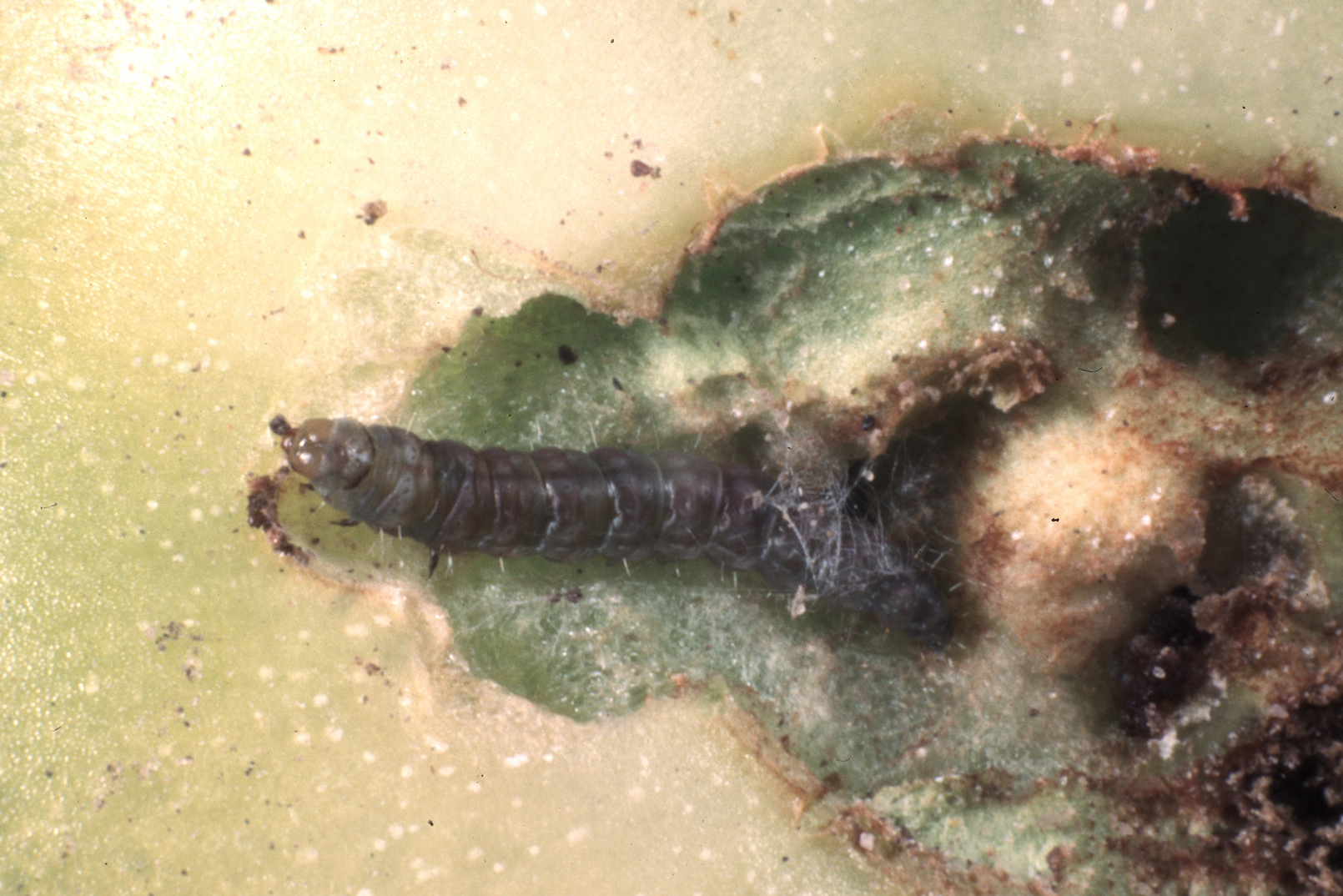General
The tomato pinworm mainly attacks tomato, but it can also survive in other Solanaceae species, especially eggplant and potato. It is frequently confused with similar species that might be present, with which it shares similar habits. Due to the initial damage of the larva which forms a mine, it can be confused with the eggplant leafminer (Gnorimoschema glochinella). For control, pheromones are usually used to disrupt the mating of adults, preventing oviposition.
Life cycle and appearance of the tomato pinworm
The eggs are whitish in colour to start with, then turn brown or orange as they develop and can be found on the underside of the leaves. When the presence of the pest is high, they can be found on any part of the plant. They emerge 4 to 7 days after being laid. The larvae have a yellowish-grayish body, changing to gray with purple spots or completely purple, with a dark brown head. In total, the larva goes through four instars which can last from 9 to 17 days depending on temperature. For pupation, the larva drops to the ground, burying itself and creating a green pupal cell which darkens to brown before emergence of the adult. The number of days in this instar varies a great deal since it can take between 8 and 20 days. The total life cycle takes about 26 days at 25°C and 100 days at 13°C. When adults emerge, they are approximately 9 to 12 mm in size and their main characteristic is their mottled brown colouration. At 25°C, it survives for about a week, but in cooler places it can live up to 3 weeks.
Damage symptoms
The tomato pinworm attacks both the leaves and fruits of tomato. Mining by larvae in the leaves is the most common type of injury. Initially, the mine is long and narrow, but it later widens to become blotch-shaped. Older larvae usually fold the leaf over itself, or knit 2 leaves together, between which they continue to feed. More severe damage is caused to the crop when older larvae penetrate fruits by burrowing under the calyx into the fruit. The name tomato pinworm in derived from the very small pinholes at the points of entry, which are often marked by the presence of a small amount of frass or droppings.
